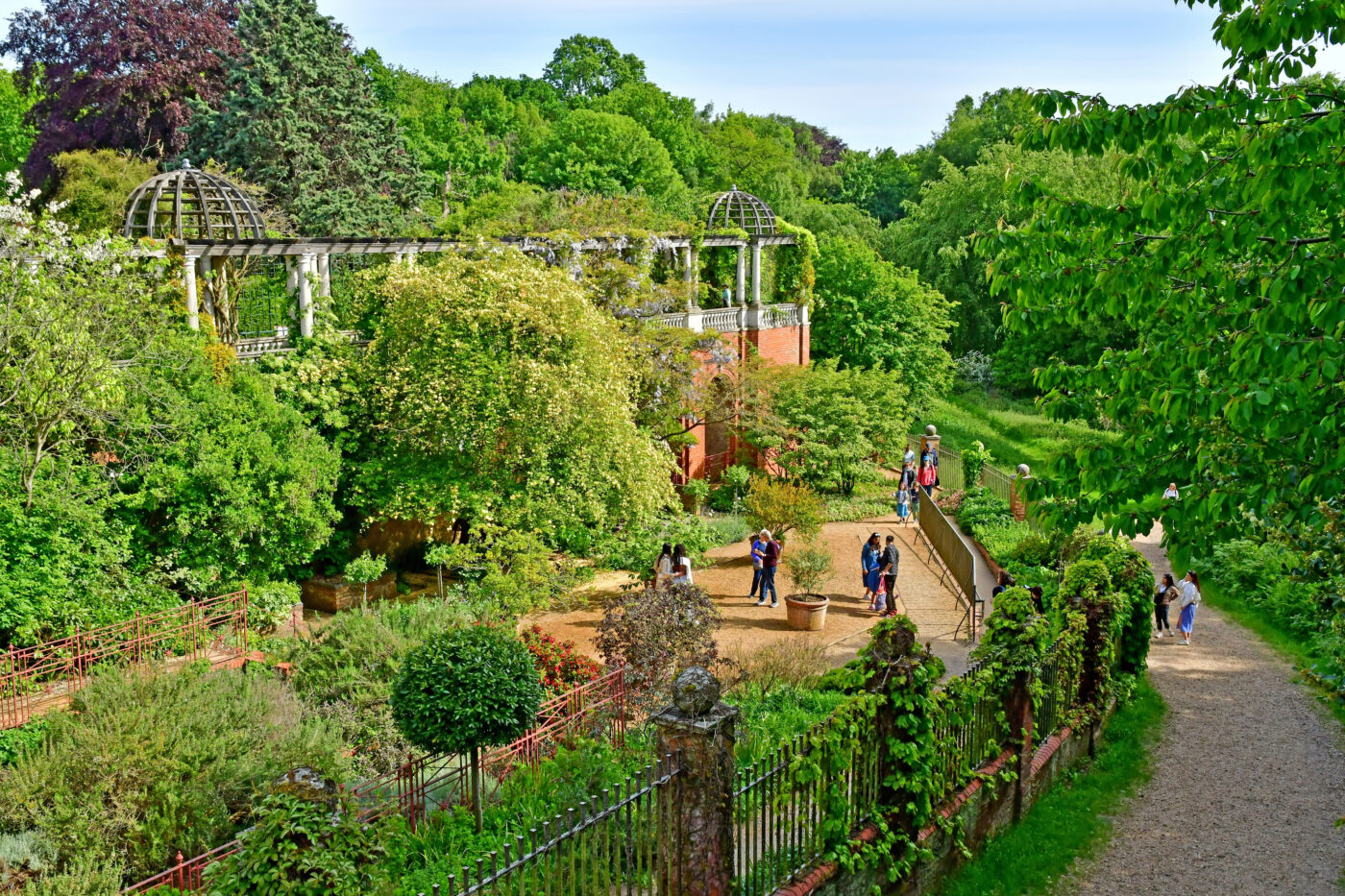It may not seem like it when you’re walking around The City, navigating the commuter crowd of Canary Wharf, or trying to escape Oxford Street tube station, but London is one of the leafiest capital cities in the world, boasting 47 per cent green space. The latter includes everything from parks and woodlands to rivers and nature reserves – and away from the hotspots of Regents Park, Hampstead Heath and Primrose Hill, there are some seriously secluded slices of flora and fauna to explore. Here are our favourite secret green spaces in London.
Hill Garden and Pergola, Hampstead Heath
Boasting beautiful views across Hampstead Heath in an historical Edwardian setting, the Hill Garden and Pergola, located in one of London’s most popular parks, dates back to 1904. Developed by wealthy philanthropist and landscaper Lord Leverhulme, the pergola was built on land acquired when he purchased a large town house on the Heath called The Hill. His vision was executed by architect Thomas Mawson and became a haven for society parties and gatherings. Today, the house is no longer there but visitors can enjoy all 230 metres of the pergola, which is now adorned with whimsical wisteria and blooming roses.
Inverforth Close, North End Way, NW3 7EX, visit cityoflondon.gov.uk
Kyoto Garden, Holland Park
While certainly not the most undiscovered green space in London, what Kyoto Garden lacks in mystery it makes up for in charm. Situated among the 22 hectares that make up Holland Park in West London, the current garden originally fringed Holland House (otherwise known as Cope Castle), a magnificent property which often hosted diplomats, politicians and aristocrats but was heavily bombed during the Blitz, leaving only a smattering of ruins remaining today. These were granted listed status in the 1950s, and Kyoto Garden opened in 1991 as a gift from the eponymous Japanese city.
A celebration of international friendship, it is now home to koi fish and peacocks, classic tiered waterfalls, stone lanterns and Japanese maple trees. The gardens open at 7.30am everyday and there’s also an open-air theatre, cafe and restaurant to discover during your visit.
Holland Park, W11 4UA, visit rbkc.gov.uk
Isabella Plantation, Richmond
![]()
Image: Shutterstock
First opened to the public in 1953, the Isabella Plantation is a 40-acre woodland set within Richmond Park that dates back to the 1830s. While it is seriously beautiful – you’ve likely seen snaps of its evergreen azaleas, which hem the natural ponds and are in full bloom during spring, on the ‘gram – it is also a haven for horticulturists. As part of the Richmond Park Site of Special Scientific Interest, the Victorian gardens are also home to the National Plant Collection of Wilson 50 Kurume azaleas, which were first introduced to the Western world by renowned plant hunter and forager Ernest Wilson, who transplanted these unique flowers from Japan in the 1920s. Visit today to get your flora fix of rhododendron, magnolia and camellia, plus many other unusual plants.
Richmond Park, TW10 5HS, visit royalparks.org.uk
Crossrail Place Roof Garden, Canary Wharf
With its lofty skyscrapers and waterways, Canary Wharf boasts a dramatic landscape – but, you’ll be hard-pressed to find much green space. Sitting atop the Elizabeth Line station, however, is a 300-metre rooftop garden which is one of the largest of its kind in the city. Free to enter and open until 9pm (it’s particularly popular in the summer with those hoping to catch a glimpse of the sunset), Crossrail Place sits directly on the Meridian line and plants have been arranged accordingly: those from Asia to the East and those from America to the West. Among the winding walkways and leafy enclaves peppered with benches, you’ll discover an 80-seat theatre too, which regularly hosts music, dance and stage performances.
Crossrail Place, Canary Wharf, E14 5AB, visit canarywharf.com
Abney Park Cemetery, Stoke Newington
One of the Magnificent Seven garden cemeteries in London – a collection of privately-owned garden cemeteries established during the 19th century – Abney Park is an eerie oasis that’s certainly worth exploring. Spanning 13 hectares of woodland, the park was opened as an exotic arboretum by famed Victorian horticulturalists, the Loddiges, in 1840 and now consists of gravestones, Gothic statues and remnants of buildings, as well as mature trees, toadstools and unique fungi. Due to its diverse range of flora, it is regularly home to finches, sparrowharks, tawny owls, mallards and parakeets.
Abney Park Trust, Stoke Newington High Street, N16 0LH, visit abneypark.org
Brockwell Park Walled Garden, Brixton
![]()
Image: Shutterstock
Tucked away within Brockwell’s bucolic park, and a stone’s throw from the hustle and bustle of Brixton, the Walled Garden is one of many marvels hidden away here. The park itself, unusually, has listed status, as has Tritton Clock Tower, the Art Deco Brockwell Lido and Brockwell Hall. The Walled Garden fringes the latter; once used as a kitchen garden and now full of herbaceous plants, as well as an abundance of roses. It’s easy to while away an afternoon or two sauntering through the fountains, cobbled walkways, and bench-lined allotments – and will make you feel like you’re a world away from the city.
Brockwell Park Gardens, SE24 9BN, visit lambeth.gov.uk
Read more: The best pick your own farms near London
